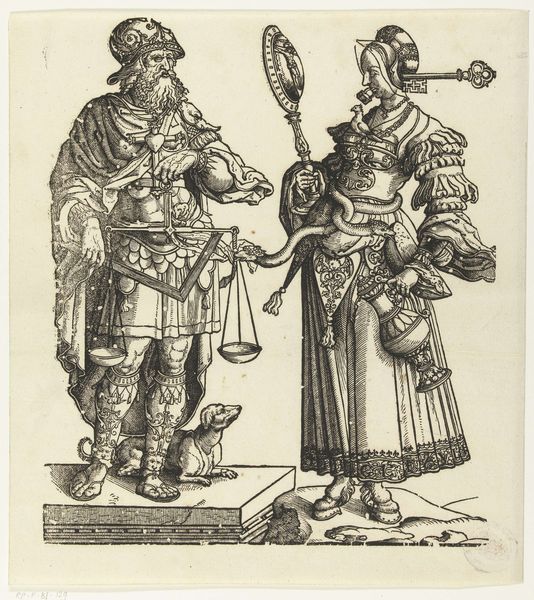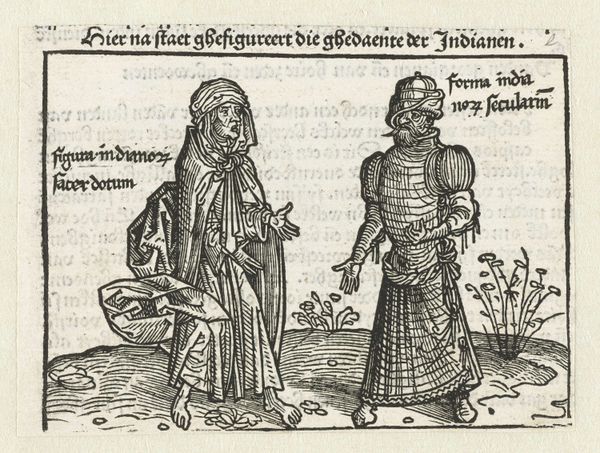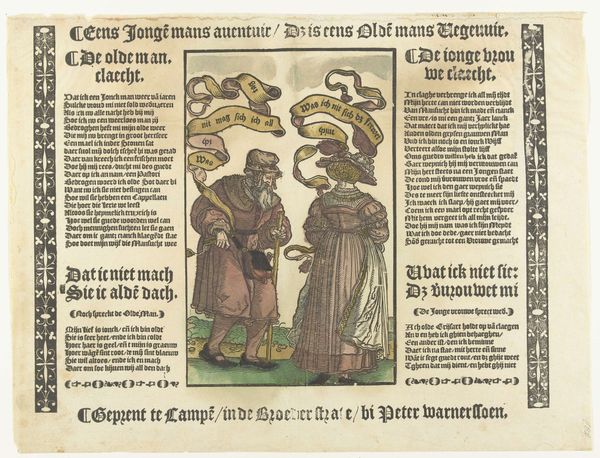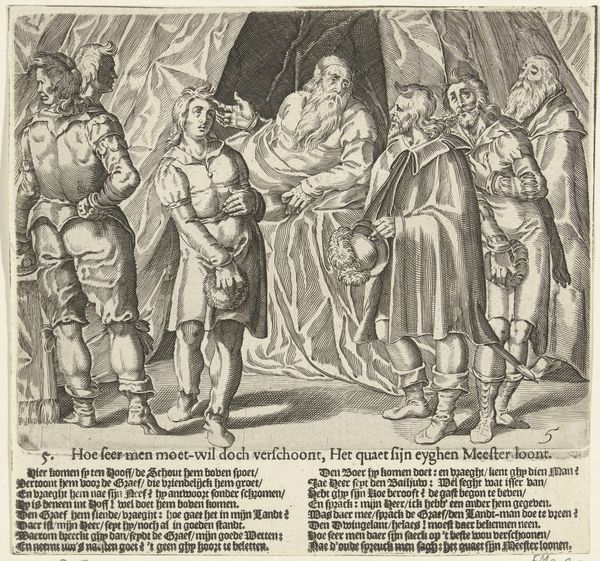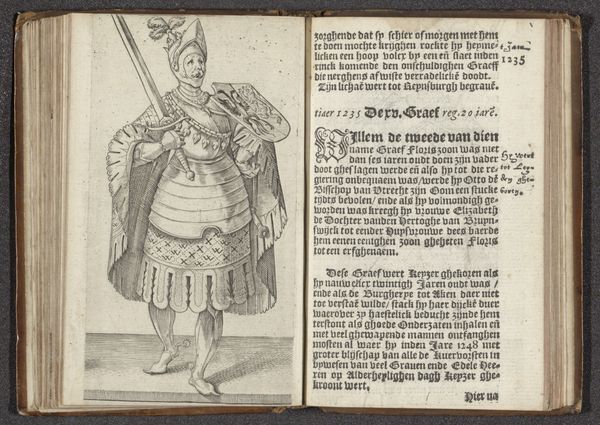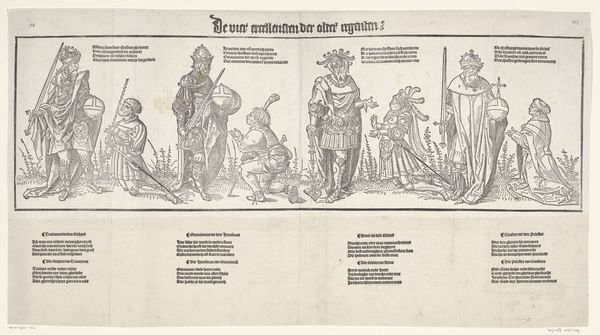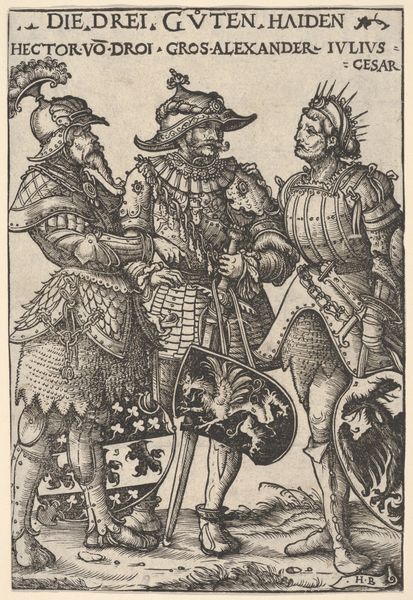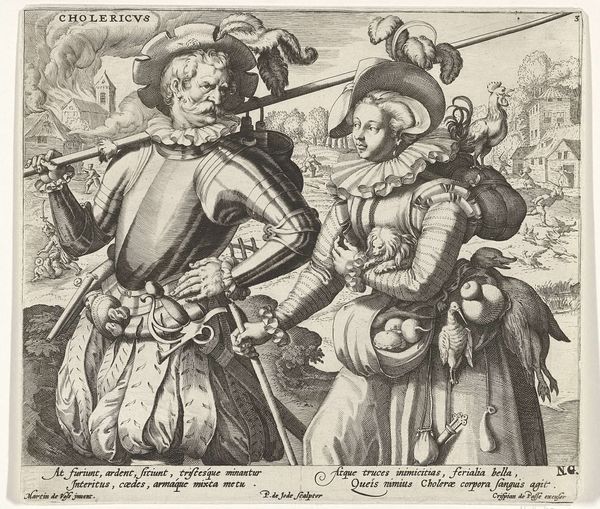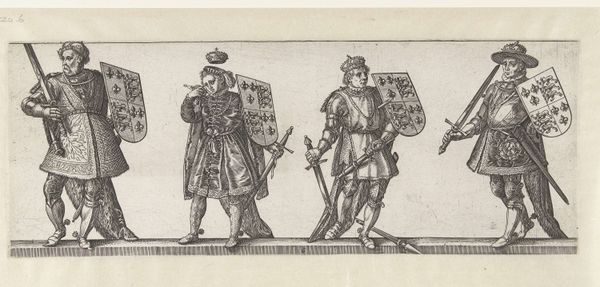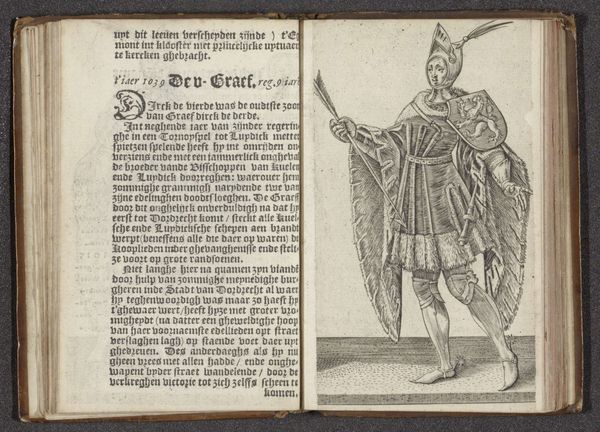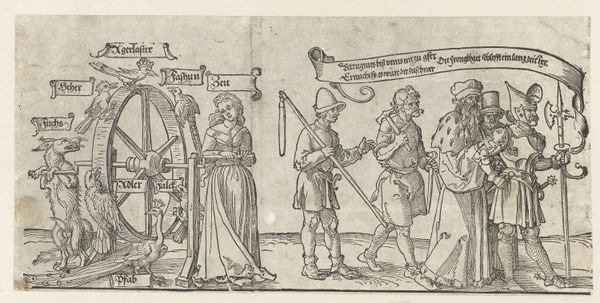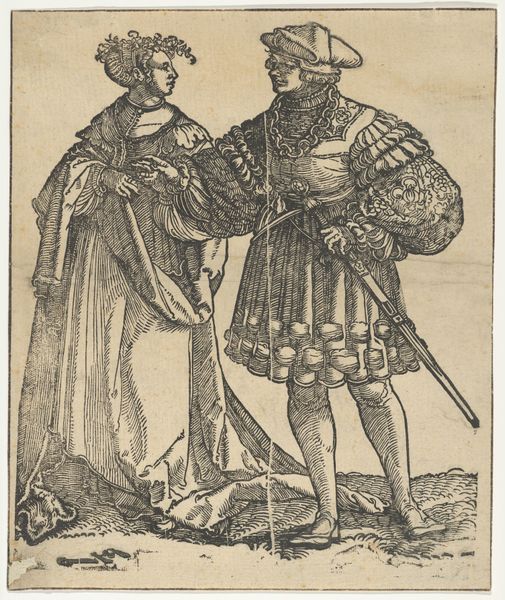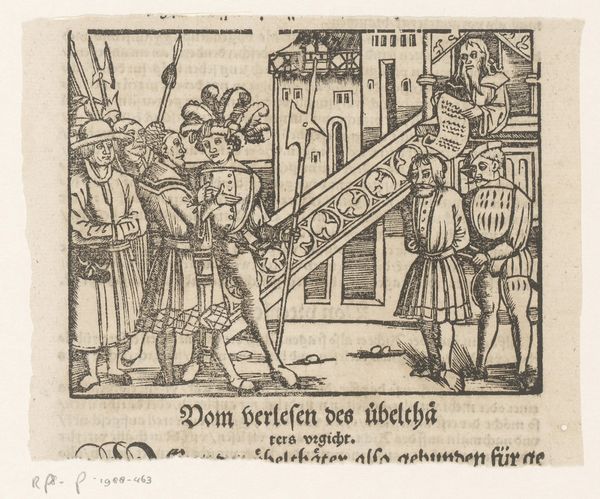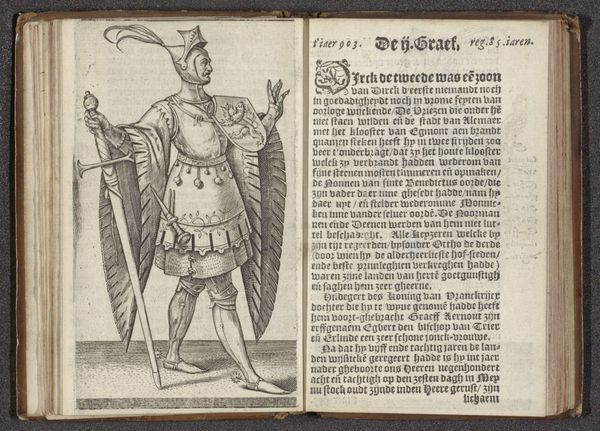
print, engraving
#
portrait
#
allegory
# print
#
figuration
#
genre-painting
#
northern-renaissance
#
engraving
Dimensions: height 282 mm, width 298 mm
Copyright: Rijks Museum: Open Domain
Curator: Editor: Here we have "The Wise Man and the Wise Woman" by Cornelis Anthonisz, created around 1540-1545. It's a colored engraving at the Rijksmuseum. I’m struck by how the clothing and objects, like the scales, seem so carefully rendered, almost like an inventory. How do you interpret this work? Curator: As a materialist, I see a detailed record of the tools, fabrics, and social markers of the time. Consider the physical act of engraving, each line a deliberate choice, a trace of labor and skill. Editor: So you're focused on the *making* of the print and what the items pictured tell us. But what about the meaning behind the "wise man and woman"? Curator: Allegory only becomes significant when tied to production and distribution. Think of who commissioned this print, who consumed it, and how it circulated. The very *idea* of wisdom, here visualized through material possessions, is linked to systems of patronage and emerging markets for images. Editor: That makes me think about the accessibility of prints like these. Engravings allowed images and ideas to be disseminated more widely than paintings, right? How did that democratization of art influence social structures at the time? Curator: Precisely! Printmaking fostered new networks of knowledge. Notice the text framing each figure. How does its inclusion of typography—another technical achievement—help integrate textual authority into visual culture, and influence contemporary thinking about what it meant to be wise or learned? Editor: That’s fascinating. I had considered the imagery and figures, but the process and its social implications add another layer to the work that brings it to life. Curator: It reveals art’s intertwined relationship with society, technology and ideology. These tangible elements often surpass simple iconographic analysis, what do you think? Editor: I agree. Shifting the focus to the production and dissemination definitely provides a fresh perspective. Thank you!
Comments
No comments
Be the first to comment and join the conversation on the ultimate creative platform.
